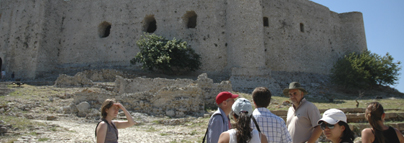Document Type
Honors Paper
Advisor
Abby Van Slyck
Publication Date
2012
Abstract
The City Beautiful and the City Practical movement –a contemporaneous alternative—were architectural and urban planning initiatives that began in the last third of the 19th century as a response to unprecedented urban growth. More specifically, these two movements were conceived as solutions to the “problem” of women on the street as new urban conditions came in conflict with gender ideals as defined by the Victorian separate spheres of masculinity and femininity. Most often, studies about turn of the century urban planning, as it included the Victorian city, the City Beautiful movement, and the City Practical movement, focus on large cities with dramatic, comprehensive urban planning solutions.
This thesis is generated from the acknowledgment that New London is not simply a lesser version of these major urban centers. Using a range of primary sources, including architectural plans, postcards, fire insurance maps, city directories, newspapers, and the building itself, this thesis analyzes the Plant Building in its physical and social context within New London. Research establishes the 1914 Plant Building, a typical five-story, mixed-use commercial structure, as an implement of the City Practical in the small city of New London, CT. Incorporating aspects of skyscraper design within its construction and framing its identity in newspapers and postcards, the Plant Building aligned itself with the skyscraper, a City Practical building type of choice. This study of State Street highlights that the physical relationship between the street and buildings changed through the Victorian city, the City Beautiful, and the City Practical, in response to how the atmosphere of the street was imagined as a function of society. Contributing to this urban reimagining was both the strategic architectural interventions on the street and the contextualizing media found in newspapers, postcards, and booster literature. Also this argument recognizes that gender is a predominant factor in the imagination of the street and so greatly contributes more to these three urban compositions than is typically recognized in these studies.
Ultimately, this thesis aims to address important historiographical issues. The understanding of the City Beautiful movement and the City Practical movement change if their definitions are expanded to accept the developments of State Street. New London demonstrates the extent that non-architectural materials can empower even a limited expression of architecture to enact social change and so reveals the importance of the studying the small city within the larger scheme of architectural history.
Recommended Citation
Cahoon, Allison, "The Plant Building: Gender, Urban Reform, and Skyscraper Design in New London, CT" (2012). Architectural Studies Honors Papers. 2.
https://digitalcommons.conncoll.edu/archstudhp/2
Included in
The views expressed in this paper are solely those of the author.
